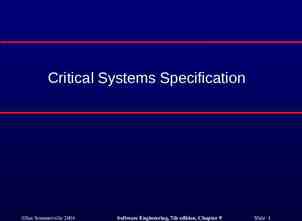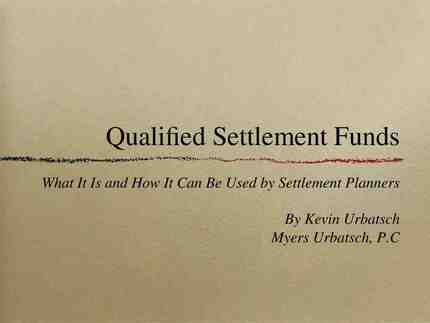MASTER RESEARCH PRESENTATION GUIDELINE How to make an
28 Slides2.43 MB
MASTER RESEARCH PRESENTATION GUIDELINE How to make an effective presentation 1 Dr. Song - Construction Management, UH
2
AGENDA Program requirements Objectives of presentation Effective presentation From an audience perspective What it is, what it is not Do the homework Basic principles Structure your presentation A step-by-step guide 3
PROGRAM REQUIREMENTS Program requirements (6396 and 6399) Progress presentation during a semester An oral final research presentation Format Time: 20 min talk Q&A time: vary depends on your research Audience: CM faculty & students, 5 10 total Technology: PowerPoint & data projector Dressing code: Business causal or business Importance Receive feedback from CM faculty Share your research with peers Improve your presentation skill 4
OBJECTIVES OF PRESENTATION Objective A concise oral report of your research in a highly logic, complete, and easy-to-understand format Sub-objectives Show your expertise in the research area/problem Show your methodology and quality implementation Show the findings and impact you have made Show your presentation skill in explaining complex issues Criteria Strongly Disagree 0-2 Disagree 3-4 Neutral 5-6 Agree 7-8 Strongly Agree 9-10 Presentation Skill The speakers spoke clearly and effectively The presentation was well organized and logically presented The speakers efficiently utilize the time available 5
EFFECTIVE PRESENTATION Effective Presentation From an Audience Perspective Understandable You fail when we don’t understand, regardless how brilliant your idea is A logic flow of ideas We easily get lost if your talk goes on a unpredictable path with slides disconnected Right to the point In such a short time to present loads of info, we expect you to be concise, don't beat around the bush Self-contained Don’t assume we know everything, prepare us with background info, explain thoroughly and concisely Complex concepts in simple languages We like you explain even the most complex issue using common sense, layman terms, and graphics (a challenge to you) Attractive design Don’t overcrowd your slides with info that can be boring, visuals & animation can be more expressive Knowledge presenter We love to listen to an expert who knows the content, 6 passionate, and prepared
7
WHAT IT IS & WHAT IT IS NOT The Challenge: present complex technical information in a very short period of time (i.e. 20-30min) What it is not What it is I did my research and know the staff, so I can just talk You spent months on the topic, NOT your audience; don’t underestimate the amount of information I will present following my report/thesis structure, page by page Simply put, you won’t be able to present 4060 pages report in merely 20min; you need a total re-thinking of the logic flow My research presentation will just like one of my prof.’s lecture talks Research presentation is different from a class lecture; the former focus on research process & results; the later focus on a set of established concepts The Solution: view presentation as a NEW task, rethink the structure, prioritize the content, focus on YOUR work, visualize 8 the information, tell a complete story, and be fully prepared
DO THE HOMEWORK Quality research work A A clearly defined research problem & objective Objectives MUST match to problems well-thought research plan Research plan MUST reflect objectives Rigorous research implementation Thorough analysis of results Must show all objectives are achieved, problems solved Effective presentation design Some basic principles A simple and logic organization A step-by-step guide 9
SOME BASIC PRINCIPLES 50 50 principle Record 50% information in a slide and keep the other 50% to yourself for you talk Keep the audience’s attention to both slides AND you Don’t squeeze too much information in a slide Human attention is very limited! 10
SOME BASIC PRINCIPLES – CONT’D Number of slides Each slide roughly takes 1-2 min to present, so for a 20min talk, you only need approx. 15 - 20 slides You can have some backup slides for Q&A Use visual aids!! Graphics carry more info, easier to understand than texts E.g. line/pie chart, flow chart, diagram, photo/video Animation can help to improve understanding 11
SOME BASIC PRINCIPLES – CONT’D Pay attention to important details If the info is logically important, keep it in slide, and explain it Don’t jump/skip through slides, if not important, delete them 12
SOME BASIC PRINCIPLES – CONT’D Use short titles and phrases Avoid full and lengthy sentence Be logic and predictable Present a clear agenda Tell them where you are and where you will go Explain not only “how” but “Why” . because of this. So Less is more Do your homework to sharpen your idea/logic Present important logic/results only (hide trivial details) Don’t try to pack too much info just to “impress” people Formatting/template Use a design template with light background color Use larger font size 13
SOME BASIC PRINCIPLES – CONT’D Use common-sense and layman terms whenever possible 14
SOME BASIC PRINCIPLES – CONT’D Precise control of content & timing Write exactly what you will say on each slide in a note, refine it until logic, clear, and concise Practice and time it, revised as needed Present to your friends and ask for feedback Note 15
SOME BASIC PRINCIPLES – CONT’D Don’t just READ your slide, PRESENT 16
STRUCTURE YOUR PRESENTATION A common structure Title page 1 min Agenda 1 min Background (optional) 1 min Problem statement 2 min Objective & scope 1 min Methodology 2-3 min [Research Implementation] 6-8 min Results & analysis 6-8 min Conclusion 1 min Future research (optional) 0.5 min Final slide – Q&A N/A Sample allocation 17 Total: 20 min
TITLE PAGE You can't make a first impression twice Title page elements A concise and meaningful title Your name and affiliation Presentation date 18
AGENDA Use agenda to clarify the structure of your presentation Make the presentation appears more organized Audience feel comfortable when they know where you will go Use short phrases Briefly explain the agenda, don’t just skip it I’ll first then “House rules” Due to the time limit, ask the audience to keep their questions to the end, tell them you have a Q&A session 19
BACKGROUND (OPTIONAL) Justify why your research area is important Consider using numbers/charts/facts quoted from credible sources to support your argument Prepare your audience Assumption: audience with basic CM knowledge, but not indepth knowledge in your particular research area Explain use simple language the significance of the research area and necessary background info. Note: Background slide may be ignored, if the research area is well-known, you can skip it and go to “Problem Statement” 20
PROBLEM STATEMENT Describe the exact research problem Focus on the specific problem addressed by YOU only Avoid statements that may be confusing/offensive unless you have adequate supporting data E.g. “the construction industry fails totally to .” Construction managers do not understand ” Briefly state literature review results (I’m not reinventing the wheel ) Visual aids (diagram, photos ) may help to highlight problem areas 21
OBJECTIVE & SCOPE List your objectives and sub-objectives Your objectives must match to your problem Try to visualize the objective using visual aids, if possible A brief statement of scope, if necessary Visual aids may help to highlight both problem and improvement (objective) side by side for better understanding 22
METHODOLOGY A global view of research steps and logic Use visual aids as much as your can Explain each major research step briefly, don’t miss any Flow chart is usually better than texts in explaining research steps Photos, diagram, animation can help to explain complex research ideas 23
RESEARCH IMPLEMENTATION Center piece of your work Allocate adequate time to present Explain “how” you do it, but also “why” you do it – rationale 24
RESULTS & ANALYSIS A description of results/deliverables Allocate adequate time to present Don’t sell yourself short! Visualize your results using visual aids or live demo! Deliverables must match to your objectives 25
CONCLUSIONS A concluding remarks A quick reflection of your research problem A quick summary what you have done Highlight your achievements Reassure the audience your academic & practical value of your research State lesson learned, if any 26
FUTURE RESEARCH & Q&A Future Research (optional) A statement of your research vision Q&A Anticipate questions and prepare for it Prepare some backup slides to assist your discussion 27
FINAL REMARK 28

































